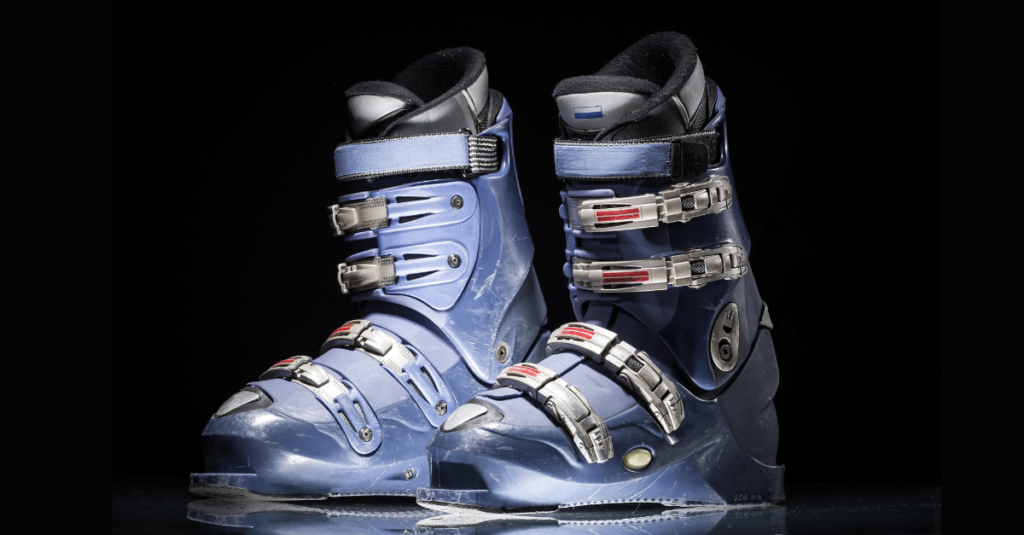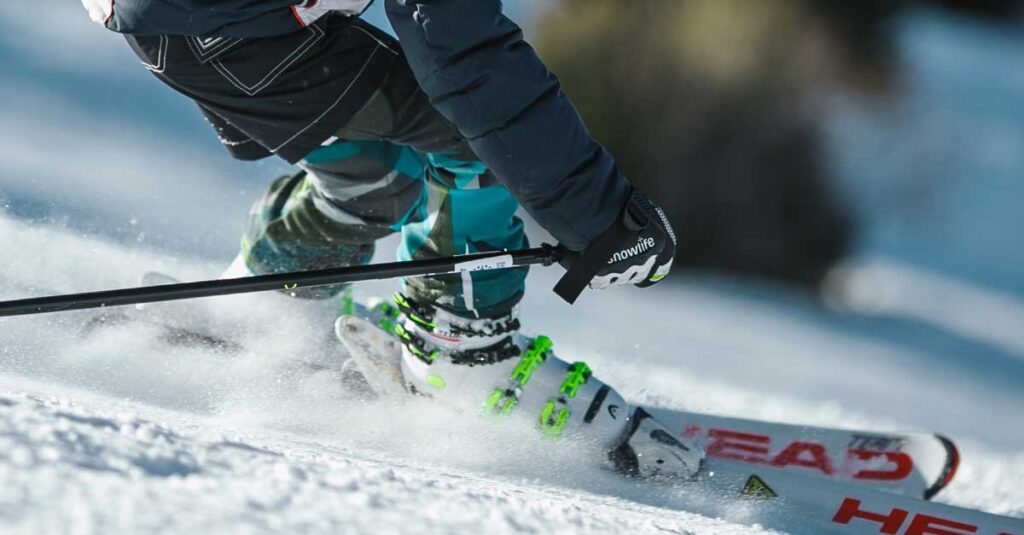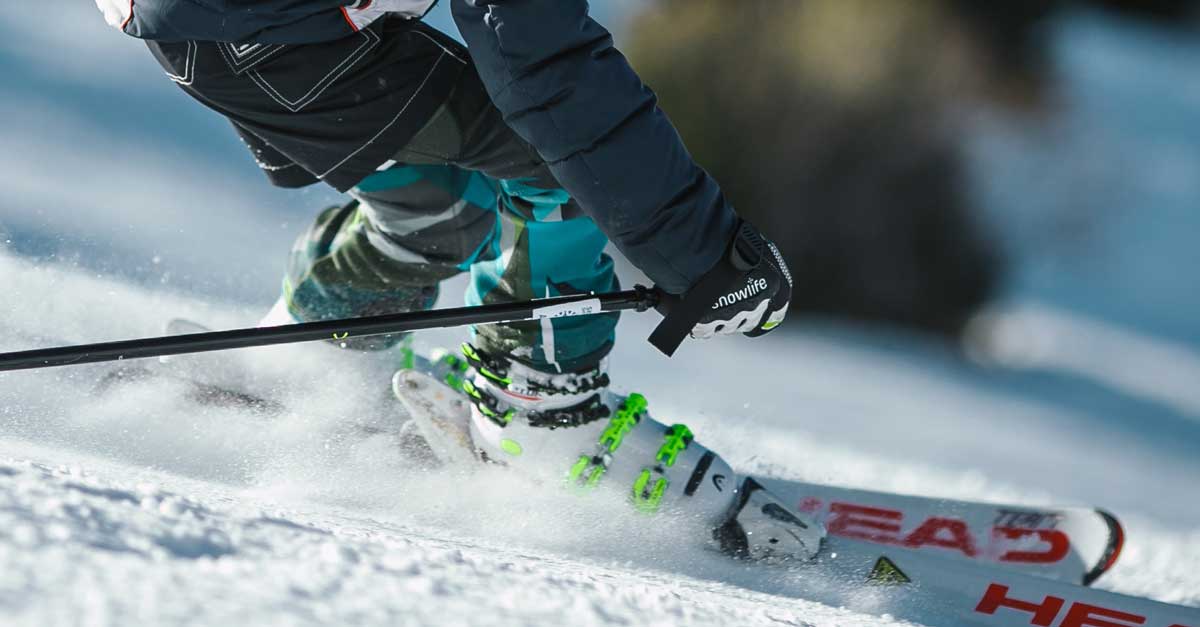The more time you spend skiing, the more you will need to upgrade your equipment. Things wear out, advances in technology and the desire for shiny new things, are all genuine reasons for buying new ski gear. In this article, we are going to tell you how to choose ski boots for intermediate skiers.
When to Upgrade Your Ski Boots?
Over time, your ski boots will become noticeably looser. You will find that you are cranking the buckles a little more each time, as it the boot won’t hug your foot as well as it used to. The problem with this is that you will get unwanted pressure points, or your feet will move around which can be disconcerting, especially when you are navigating a mogul field.
Although, before buying new boots, you may get away with just changing the liners. This is a cost-effective way of extending the life of your boots. But, sometimes a pair of new liners just won’t cut it.
The first thing to do is check that your buckles are all intact and working properly, the next thing to consider, is that the plastic ski boots are made from doesn’t last forever. Ski boots are subject to a lot of stress, extreme weather conditions and UV light. All these things can cause the plastic to crack.

The other part you need to keep an eye on, is the boot-binding interface. When these start to wear, the binding can struggle to do its job properly of securely holding your boot. You want to have the confidence that your ski will not come loose when carving the early morning corduroy.
Some ski boots have replaceable heel and toe pads, but this isn’t common. If you visit a decent ski shop or boot fitter, they will be able to measure the amount of wear and let you know if they are safe enough.
It is generally accepted that a ski boot will last about 150 days of use. But you have to consider what a day’s skiing is for you. Are you a first lift to last lift kind of person, or do you finish at lunchtime and hit the bars? Also, how hard you ski will make a difference to the longevity of your boots. So all this considered, if you manage to get 30 full days on the hill per season, you will need to replace your ski boots every five years.
Buying Your Next Pair of Ski Boots
As an intermediate skier, you will ski in lots of different conditions and on varied terrain. When you are at this level, you will need your ski boots to give you precise handling and control when skiing blues, reds, blacks and on the odd powder day.
1. Find a Good Ski Boot Fitter
A good ski boot fitter has the expertise and experience to stop you making bad choices. You will know a good ski boot fitter when they ask to see your old boots, why you are replacing them and what you like and dislike about them. They will also ask you about where you usually ski, what type of skier you are and how often you ski.
Most boot fitters will know that the boot will be a good fit for you before you have even put it on. You will feel that the boot is a little short and tight, to begin with, this is normal, and the liners will start to pack out when you start skiing. Ski boots that feel perfectly comfortable in the shop with room to wiggle your toes are probably way too big.

2. Get the Right Flex
Intermediate skiers really should look into ski boots with a medium flex. Medium flex boots give you the control and comfort to enjoy a variety of conditions. The flex of a ski boot is often rated between 90 and 150, the higher the number, the stiffer the boot. A good boot fitter will be able to give you some options based on your size, weight, ability and skiing style. But heavier and stronger skiers will generally require a stiffer boot.
3. Get the Right Size
Often skiers buy boots that are too big for them. Ski Boots that are too big compromise the control you have over your skis. Intermediate skiers that buy boots that are too big, often suffer from pressure points, cold feet, shin bang, foot pain and a bad day on the mountain. Unfortunately, you also have the cost of buying another pair of boots
4. Don’t Buy Ski Boots Based on Their Looks
Many ski boots these days look really cool, but the ones that you find the sexiest, may not fit you properly. If the boots don’t have the perfect fit, but look great, they are not the right ones for you.
5. Buy Ski Boots Suitable for Your Ability
When talking to a boot fitter, you need to be honest about your ability. If you dumb down your ability or make yourself sound more experienced than you are, you will end up with the wrong boots.

6. Don’t Buy Ski Boots Based on Your Friend’s Experiences
You may have a friend that raves about their perfect pair of ski boots. It is easy to think that they might be perfect for you too. However, this is often not the case and may be the worst pair of ski boots you have ever bought. A good ski shop will have a wide range of brands and models, all with their own fit, flex, features and characteristics. Pretty much all ski boots are good these days, but a good boot fitter will find the right pair for you.
Your opinion is important to us!
Do you have more suggestions on how to choose ski boots for intermediate skiers? Let us know in the comments bellow or contact us!
